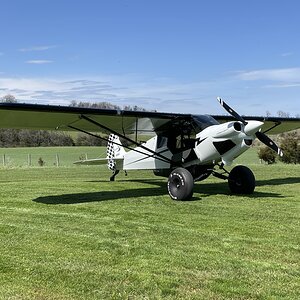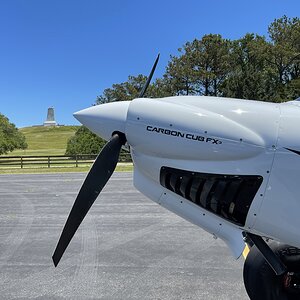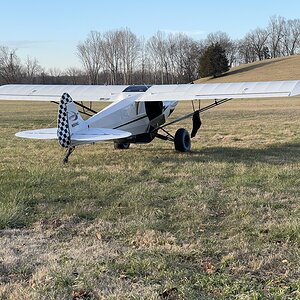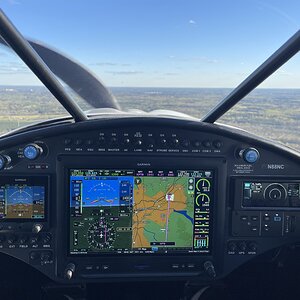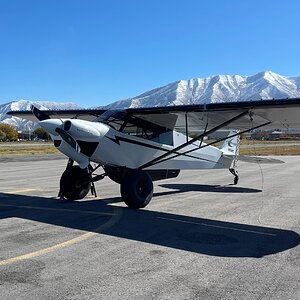Navigation
Install the app
How to install the app on iOS
Follow along with the video below to see how to install our site as a web app on your home screen.
Note: This feature may not be available in some browsers.
More options
Welcome to Flightinfo.com
- Register now and join the discussion
- Friendliest aviation Ccmmunity on the web
- Modern site for PC's, Phones, Tablets - no 3rd party apps required
- Ask questions, help others, promote aviation
- Share the passion for aviation
- Invite everyone to Flightinfo.com and let's have fun
You are using an out of date browser. It may not display this or other websites correctly.
You should upgrade or use an alternative browser.
You should upgrade or use an alternative browser.
First
- Thread starter UnAnswerd
- Start date
- Watchers 7
jknight8907
Well-known member
- Joined
- Dec 25, 2004
- Posts
- 215
mattpilot
Finally! Graphical TFRs!!
- Joined
- Sep 30, 2003
- Posts
- 1,144
FracCapt
Clown punchers, unite!
- Joined
- Mar 11, 2004
- Posts
- 1,415
mattpilot said:btw unanswered - ideally you should have at least 200ft to land a helo. They don't like to come down vertically because then they can get into "settling with power", which means you smack into the ground.
You're right....but there are many times that there is NOT that much room to set one down. In a single, you're really trusting that the engine won't quit when you land in a confined area.....and you really have to watch your descent rate so you don't get into SWP. In a twin, you're not taking as much of a risk...it just depends on whether or not the thing can hover OGE single engine at that density altitude. If so, no problem. If not...well, you're in almost as bad of shape(maybe worse) as if you were in a single.
urflyingme?!
Man Among Men
- Joined
- Feb 17, 2004
- Posts
- 1,275
FracCapt
Clown punchers, unite!
- Joined
- Mar 11, 2004
- Posts
- 1,415
mudkow60 said:I have landed in a few zones that are not much bigger than the rotor arc.
And THAT is the beauty of a helicopter!
One, two or three engines it doesn't matter. If you are going vertical into a confined area with an excessive rate of descent (greater than 300-500 fpm) you can easily get into settling with power especially if the aircraft is heavy. I'm not talking little R22 ,44 or even 206's. but with a UH-1, 222, S76, 430, if you exceed that, especially in a 222 you will fall right through and hit hard!!! We have to demonstrate this at every 6 month checkride, because we do go into extremely tight areas at gross weight. If you were to lose an engine, you can still only pull 100% torque, the same as with 2 engines. My motto is, "never go into a tight area, single or with all engines, unless you absolutely have too, or you do not have a way out" . Just my 2 cents.FracCapt said:You're right....but there are many times that there is NOT that much room to set one down. In a single, you're really trusting that the engine won't quit when you land in a confined area.....and you really have to watch your descent rate so you don't get into SWP. In a twin, you're not taking as much of a risk...it just depends on whether or not the thing can hover OGE single engine at that density altitude. If so, no problem. If not...well, you're in almost as bad of shape(maybe worse) as if you were in a single.
Pistlpetet
Well-known member
- Joined
- Nov 26, 2002
- Posts
- 290
cubflyr said:One, two or three engines it doesn't matter. If you are going vertical into a confined area with an excessive rate of descent (greater than 300-500 fpm) you can easily get into settling with power especially if the aircraft is heavy. I'm not talking little R22 ,44 or even 206's. but with a UH-1, 222, S76, 430, if you exceed that, especially in a 222 you will fall right through and hit hard!!! We have to demonstrate this at every 6 month checkride, because we do go into extremely tight areas at gross weight. If you were to lose an engine, you can still only pull 100% torque, the same as with 2 engines. My motto is, "never go into a tight area, single or with all engines, unless you absolutely have too, or you do not have a way out" . Just my 2 cents.
And that my friend....is what separates the military from civilian pilots. You go into the tightest places because it is your job, and people depend on you for it. You go in with one engine or more, day or under NVGs. Not a problem when you are use to doing it.
Do I hear some horn tootin going on there, sort of one a "separates the men from the boys" swagger in that thar chattering keyboard of yours?
We all strive to see the mission accomplished, whatever it may be, civillian, military, and even us belt buckle wearing' crop dusters, big guy. Regardless of what we've done before.
What separates the living from the dead is hard, cold ground, powerlines, trees, obstacles, and yes, even settling with power.
Funny part is once you're dead, it doesn't really matter if you're reserve, active duty, civillian, or democrat.
We all strive to see the mission accomplished, whatever it may be, civillian, military, and even us belt buckle wearing' crop dusters, big guy. Regardless of what we've done before.
What separates the living from the dead is hard, cold ground, powerlines, trees, obstacles, and yes, even settling with power.
Funny part is once you're dead, it doesn't really matter if you're reserve, active duty, civillian, or democrat.
flyhighroller
Member
- Joined
- Sep 25, 2004
- Posts
- 12
mattpilot
Finally! Graphical TFRs!!
- Joined
- Sep 30, 2003
- Posts
- 1,144
flyhighroller said:Speaking of SWP...QUIZ TIME---what all do you need to get into that??
According to aeronautics engineers, a rate of descent in excess of 700ft per min to get into a fully developed conditions, while being at a airspeed that is lower than the point where you obtain max ETL for your make/model.
AFAIK know, most instructors teach ROD in excess of 300ft & below 30 kts to be on the safe side.
"ROD in excess of 300ft & below 30 kts to be on the safe side."
As I was taught:
ROD 100-300fpm
Near Vertical Decent (tailwinds bite you also)
Power applied (20-100%)
And you WILL know when S.W.P. arrives, the first time I experienced it, I thought the aircraft was falling apart...
Next quiz, what are the indications that you are in it and what do you do?
As I was taught:
ROD 100-300fpm
Near Vertical Decent (tailwinds bite you also)
Power applied (20-100%)
And you WILL know when S.W.P. arrives, the first time I experienced it, I thought the aircraft was falling apart...
Next quiz, what are the indications that you are in it and what do you do?
Birdstrike
Atlantic City
- Joined
- Jul 2, 2002
- Posts
- 13,334
Decaying rotor rpm and airspeed as the collective is instinctively pulled into the armpit while you try to figure out what the fork is going on, then you remember what that crusty old guy taught you and as you instead lead with cyclic to gain airspeed and fly out of it before contacting the ground. Then you worry about writing up that overtorque.Hobit said:And you WILL know when S.W.P. arrives, the first time I experienced it, I thought the aircraft was falling apart...
Next quiz, what are the indications that you are in it and what do you do?
FracCapt
Clown punchers, unite!
- Joined
- Mar 11, 2004
- Posts
- 1,415
Hobit said:And you WILL know when S.W.P. arrives, the first time I experienced it, I thought the aircraft was falling apart...
Next quiz, what are the indications that you are in it and what do you do?
I was taught 300fpm or more descent, power applied to the rotor(any amount), and, airspeed below ETL(16-24 knots IAS, depending on model).
The primary indications of SWP are increased vibrations and increasing descent rate(which increases as you pull more collective). During a SWP demonstration, had a descent rate that pegged the VSI(maxes at 2,000fpm) within 10 seconds. More collective I pulled, the worse the vibrations got....and, presumably, the descent rate as well. We let it develop fully, then dropped the collective, pushed the cylic full forward, started bringing the collective back up at about 30 knots....leveled off within 300' of initiating the recovery, and this was in an estimated 3000fpm descent rate.
Birdstrike
Atlantic City
- Joined
- Jul 2, 2002
- Posts
- 13,334
Yeah...and a bunch of other stuff. I wasn't the sharpest knife in the drawer at flight school and I'd already scared myself plenty of times in airplanes forgetting what my instructor told me. But, after that first nickle ride at 'Rucker, I knew it wasn't about just scaring myself anymore, it was about the real possibility of augering in in one of these things before I even knew why. God bless CW4 Bobby Evans and his ability to teach idiots like me.TundraT said:the recurring theme that everyone was taught about S.W.P....
Latest posts
-
-
Question How to get a red CAS alert for an alternator failure on the Garmin G3X?
- Latest: Cactus Charlie
-
-
Latest resources
-
-
-
-
-
AC 90-89C - Amateur-Built Aircraft and Ultralight Flight Testing HandbookAmateur-Built Aircraft and Ultralight Flight Testing Handbook
- Neal
- Updated:

